Dr. Bruno Andrade

Dr. Bruno Andrade completed his PhD in Biotechnology at the State University of Feira de Santana, in 2011. He has experience in Bioinformatics and Computational Chemistry, with emphasis on structural biology and computed aided drug and bioactive compounds design. He has expertise in the use of traditional methods, as well as artificial intelligence (AI), for protein and peptide modeling, and drug discovery, developing studies with virtual ligand screening using comparative methods (Ligand Based Virtual Screening), molecular docking and molecular dynamics. He is currently full professor at the State University of Southwest Bahia (UESB), in the Medical School, and principal investigator/coordinator of the Laboratory of Bioinformatics and Computational Chemistry (LBQC). He is professor and advisor in the Graduate Programs in Biotechnology (PPGBIOTEC-UEFS / Fiocruz-Ba), Genetics and Molecular Biology (PPGGBM-UESC), Chemistry (PPGQUI-UESB), and Biotechnology (PPGBIOTEC-UFT).
Relevant Publications:
- Silva Andrade B, Ghosh P, Barh D et al. Computational screening for potential drug candidates against the SARS-CoV-2 main protease. F1000Research, v. 9, p. 514, 2020.
- Barh D, Tiwari S, Silva Andrade B, Giovanetti M, Almeida Costa E, Kumavath R, Ghosh P, Góes-Neto A, Carlos Junior Alcantara L, Azevedo V. Potential chimeric peptides to block the SARS-CoV-2 spike receptor-binding domain. F1000Research, v. 9, p. 576, 2020.
- Moura W.S, Souza S.R, Campos F.S., Cangussu A.S.R., Santos E.M.S., Andrade B.S., Gomes C.H.B., Viana K.F, Haddi K., Oliveira E.E., Nascimento V.L., Aguiar R.W.S. Antibacterial activity of Siparuna guianensis essential oil mediated by impairment of membrane permeability and replication of pathogenic bacteria. Ind. Crop. Prod., v. 146, p. 112142, 2020.
- Toledo PFS, Viteri Jumbo LO, Rezende SM, Haddi K, Silva BA, Mello TS, Della Lucia TMC, Aguiar RWS, Smagghe G, Oliveira EE. Disentangling the ecotoxicological selectivity of clove essential oil against aphids and non-target ladybeetles. Sci. Total Environ., v. 718, p. 137328, 2020.
- Borges J.C.M., Haddi K, Oliveira E.E., Andrade B.S., Nascimento V.L., Melo T.S., Didonet J., Carvalho J.C.T., Cangussu A.S, Soares I.M., Ascencio S.D., Raposo N.R.B., Aguiar R.W.S. Mosquiticidal and repellent potential of formulations containing wood residue extracts of a Neotropical plant, Tabebuia heptaphylla. Ind. Crop. Prod, v. 129, p. 424-433, 2019.
- Santos G, Giraldez-Alvarez LD, Ávila-Rodriguez M, Capani F, Galembeck E, Neto AG, Barreto GE, Andrade B. SUR1 Receptor Interaction with Hesperidin and Linarin Predicts Possible Mechanisms of Action of Valeriana officinalis in Parkinson. Front Aging Neurosci., v. 8, p. 97, 2016.
Geraldine Van der Auwera
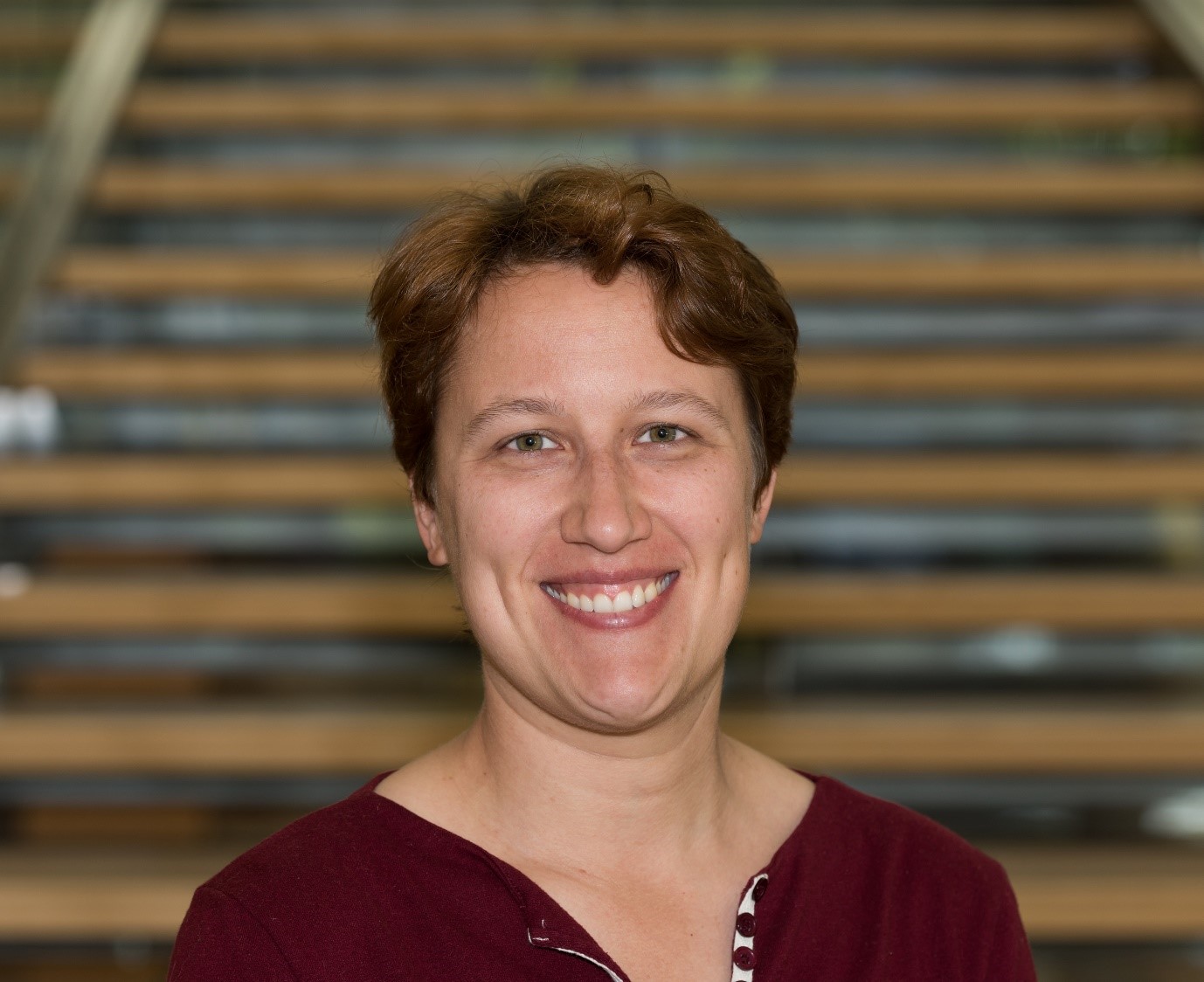
Geraldine Van der Auwera directs outreach and communication efforts for the Data Sciences Platform at the Broad Institute. As part of that role, she serves as an educator and advocate for researchers who use DSP software and services including GATK, the Broad's industry-leading toolkit for variant discovery analysis; the Cromwell/WDL workflow management system; and Terra.bio, a cloud-based analysis platform that integrates computational resources, methods repository and data management in a user-friendly environment. Her first book, Genomics in the Cloud, is published by O'Reilly Media and available at https://oreil.ly/genomics-cloud.
Van der Auwera received her Ph.D. in Biological Engineering from the Université catholique de Louvain (UCL) in Louvain-la-Neuve, Belgium in 2007, and trained as a postdoctoral fellow in the Kolter lab at Harvard Medical School department of Microbiology.
Dr. Guilherme Oliveira
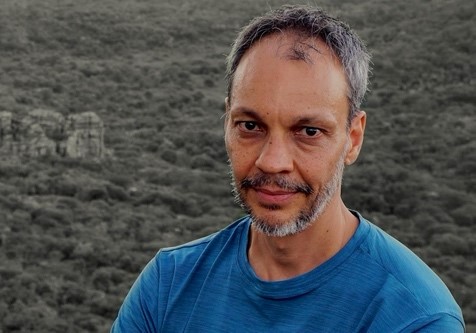
Dr. Guilherme Oliveira completed his PhD in Molecular Biology at Texas A&M University in 1995. He was a post-doctoral fellow at Texas A&M, the University of York and the Pasteur Institute. He joined FIOCRUZ in Belo Horizonte in 2001 where he was a Senior Scientist. In 2015 he moved to the Instituto Tecnológico Vale in Belém as Senior Scientist and leader of the Environmental Genomics Group. At ITV his group develop worked on the description of the Amazonian biodiversity and in conservation and monitoring of species and environments using molecular tools. In 2020 he became the Scientific Manager of ITV.
Relevant Recent Publications:
- Trindade, F. C., Ramos, S.J., Gastauer, M., Saraiva, A.M.M., Caldeira, C.F., Oliveira, G., Valadares, R.B.S. Metaproteomic analysis from a ferruginous rocky outcrop soil from Southeastern Brazil. Pedobiologia Journal of Soil Ecology. 2020. 81-82, 150664.
- Carvalho, C.S., Lanes, E.C.M., Silva, A.R., Caldeira, C.F., Carvalho-Filho, N., Gastauer, M., Imperatriz-Fonseca, V.L., Nascimento, W., Oliveira, G., Siqueira, J.O., Viana, P.L., Jaffe. R. Habitat loss does not always entail negative genetic consequences. 2019. Frontiers in Genetics. 10:1101.
- Gastauer, M., Vera, M.P.O., Souza, K.P., Pires, E.S., Alves, R., Caldeira, C.F., Ramos, S.J., Oliveira, G. A metagenomic survey of soil microbial communities along a rehabilitation chronosequence after iron ore mining. 2019. Nature Scientific Data. 6. 190008.
- Lanes, E., Pope, N.S., Alvez, R., Carvalho-Filho, N.M., Giannini, T.C., Giulietti, A.M., Imperatriz-Fonseca, V.L., Monteiro, W., Oliveira, G., Silva, A.R., Siqueira, J.O., Souza-Filho, P.M.W., Vasconcelos, S., Jaffé, R. Landscape genomic conservation assessment of a narrow-endemic and a widespread morning glory from Amazonian savannas. 2018. Frontiers Plant Science. 9:532.
- Babiychuk, E., Kushnir, S., Vasconcelos, S., Dias, M.C., Carvalho-Filho, N., Nunes, G.L., Santos, J.F., Tyski, L., Silva, D.F., Castilho, A., Fonseca, V.L.I., Oliveira, G. Natural history of the narrow endemics Ipomoea cavalcantei and I. marabaensis from Amazon Canga savannahs. 2017. Scientific Reports. 7:7493.
Dr. Helder Nakaya
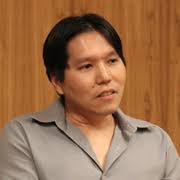
Helder Nakaya é biólogo da Universidade de São Paulo e doutor em Bioquímica pelo Departamento de Bioquímica do IQ USP. O doutorado foi voltado para a área de Biologia Molecular e Bioinformática. De 2008 a 2011, como pós-doutor na Emory University, Atlanta (USA) pesquisou o mecanismo de atuação de vacinas em células do sistema imune utilizando técnicas em larga escala. Se tornou professor assistente do Departamento de Patologia da Emory University em 2011, onde utiliza a biologia de sistemas para prever e entender a resposta imune a diferentes vacinas. Atualmente é docente do Departamento de Análises Clínicas e Toxicológicas da Faculdade de Ciências Farmacêuticas da USP e professor adjunto da Emory University. É membro afiliado da Academia Brasileira de Ciências, consultor da CEPI (Coalition for Epidemic Preparedness Innovations) e membro do Scientific Advisory Board do consórcio europeu da vacina do Ebola. Website do laboratório de Biologia de Sistemas Computacional: www.csbiology.com
Principais publicações
ZIMMERMANN, PETRA ; PERRETT, KIRSTEN P. ; RITZ, NICOLE ; FLANAGAN, KATIE L. ; ROBINS'BROWNE, ROY ; VAN DER KLIS, FIONA R. M. ; CURTIS, NIGEL ; ABRUZZO, VERONICA ; ALLEN, KATIE ; BONNICI, RHIAN ; CASALAZ, DAN ; ELBOROUGH, HANNAH ; FREYNE, BRIDGET ; GARDINER, KAYA ; GERMANO, SUSIE ; KOLLMANN, TOBIAS ; MESSINA, NICOLE ; MORRISON, CLARE ; NAKAYA, HELDER ; PONSONBY, ANNE LOUISE ; SHANN, FRANK ; SOUTH, MIKE ; VUILLERMIN, PETER . Biological sex influences antibody responses to routine vaccinations in the first year of life. ACTA PAEDIATRICA, v. 109, p. 147-157, 2020.
BONEZI, VIVIAN ; CATANEO, ALLAN H. D. ; BRANQUINHO, MARYANA S. F. ; SILVA, MAYSA B. B. ; GONZALEZ-DIAS, PATRICIA ; PEREIRA, SAMUEL S. ; FERREIRA, LUÍS C. DE SOUZA ; Nakaya, Helder I. ; CAMPA, ANA ; WOWK, PRYSCILLA F. ; SILVEIRA, EDUARDO L. V. . Flavivirus-Mediating B Cell Differentiation Into Antibody-Secreting Cells in Humans Is Associated With the Activation of the Tryptophan Metabolism. Frontiers in Immunology, v. 11, p. 1, 2020.
Nakaya, Helder I; Wrammert, Jens ; Lee, Eva K ; Racioppi, Luigi ; Marie-Kunze, Stephanie ; Haining, W Nicholas ; Means, Anthony R ; Kasturi, Sudhir P ; Khan, Nooruddin ; Li, Gui-Mei ; McCausland, Megan ; Kanchan, Vibhu ; Kokko, Kenneth E ; Li, Shuzhao ; Elbein, Rivka ; Mehta, Aneesh K ; Aderem, Alan ; Subbarao, Kanta ; Ahmed, Rafi ; Pulendran, Bali . Systems biology of vaccination for seasonal influenza in humans. Nature Immunology (Print), v. 12, p. 786-795, 2011.
Querec, Troy D ; Akondy, Rama S ; Lee, Eva K ; Cao, Weiping ; Nakaya, Helder I ; Teuwen, Dirk ; Pirani, Ali ; Gernert, Kim ; Deng, Jiusheng ; Marzolf, Bruz ; Kennedy, Kathleen ; Wu, Haiyan ; Bennouna, Soumaya ; Oluoch, Herold ; Miller, Joseph ; Vencio, Ricardo Z ; Mulligan, Mark ; Aderem, Alan ; Ahmed, Rafi ; Pulendran, Bali . Systems biology approach predicts immunogenicity of the yellow fever vaccine in humans. Nature Immunology, v. 10, p. 116-125, 2008.
NAKAYA, H. I.; AMARAL, P. P. ; LOURO, R. ; Lopes A ; FACHEL, A. A. ; Moreira, YB ; El-Jundi, TA ; SILVA, Aline M da ; REIS, E. M. ; Verjovski-Alemida, S. . Genome mapping and expression analyses of human intronic noncoding RNAs reveal tissue-specific patterns and enrichment in genes related to regulation of transcription. Genome Biology, v. 8, p. R43, 2007.
Reis, Eduardo M Nakaya, Helder I Louro, Rodrigo CANAVEZ, Flavio C Flatschart, Áurea V F ALMEIDA, Giulliana T EGIDIO, Camila M Paquola, Apuã C MACHADO, Abimael A FESTA, Fernanda YAMAMOTO, Denise ALVARENGA, Renato da Silva, Camille C BRITO, Glauber C Simon, Sérgio D MOREIRA-FILHO, Carlos A LEITE, Katia R CAMARA-LOPES, Luiz H CAMPOS, Franz S GIMBA, Etel VIGNAL, Giselle M EL-DORRY, Hamza SOGAYAR, Mari C BARCINSKI, Marcello A da Silva, Aline M , et al. ; Antisense intronic non-coding RNA levels correlate to the degree of tumor differentiation in prostate cancer. Oncogene (Basingstoke), v. 23, n.39, p. 6684-6692, 2004.
Henning Hermjakob
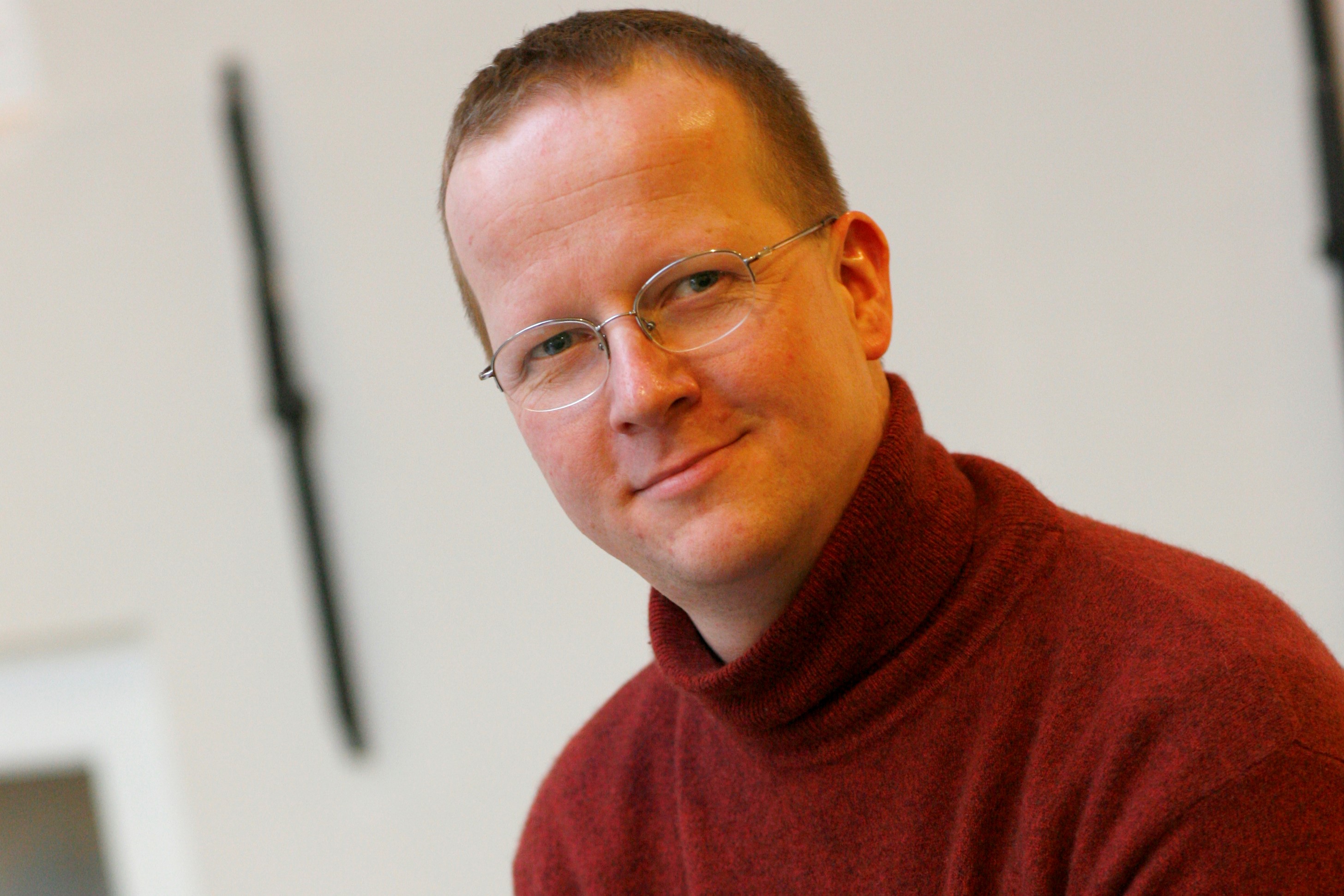
Henning Hermjakob obtained his MSc in Bioinformatics from the University of Bielefeld, Germany, in 1996. He joined the European Bioinformatics Institute (EMBL-EBI) in 1997. He leads the Molecular Systems Cluster at the EBI, and 2015-2019 had joint appointment as Director of Bioinformatics at the National Center for Protein Sciences, Beijing. His team provides a broad portfolio of resources for systems biology, ranging from molecular interactions (IntAct)[1] and curated pathways (Reactome)[2] to systems biology models (BioModels)[3] at the highest level of abstraction. Supporting the domain-specific resources, his team develops broad-scope data infrastructure resources identifiers.org [4] and the Omics Discovery Index [5]. As founding member and SC member of the HUPO Proteomics Standards Initiative, and SAB member in systems and translational molecular biology projects, he contributes to the international standardization of data representation in molecular biology, and the implementation of community standards in high availability, stable public resources [6,7].
- Del-Toro N, et al. Capturing variation impact on molecular interactions in the IMEx Consortium mutations data set. Nat Commun. 2019 Jan 2;10(1):10.
- Griss J, Viteri G, Sidiropoulos K, Nguyen V, Fabregat A, Hermjakob H. ReactomeGSA - Efficient Multi-Omics Comparative Pathway Analysis. Mol Cell Proteomics. 2020 Sep 9:mcp.TIR120.002155.
- Malik-Sheriff RS, et al. BioModels - 15 years of sharing computational models in life science. Nucleic Acids Res. 2020 Jan 8;48(D1):D407-D415.
- Wimalaratne SM, et al. Uniform resolution of compact identifiers for biomedical data. Sci Data. 2018 May 8;5:180029.
- Perez-Riverol Y, et al. Quantifying the impact of public omics
data. Nat Commun. 2019 Aug 5;10(1):3512.
- Orchard S, et al. Protein interaction data curation: the International Molecular Exchange (IMEx) consortium. Nat Methods. 2012 Mar 27;9(4):345-350.
- Vizcaíno JA, et al. ProteomeXchange provides globally coordinated proteomics data submission and dissemination. Nat Biotechnol. 2014 Mar 10;32(3):223-6.
Full bibliography at https://tinyurl.com/hhepub.
Dr. Igor Ulitsky
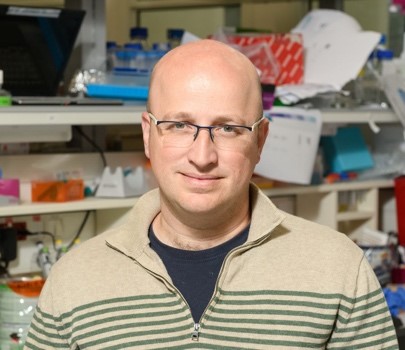
Dr. Igor Ulitsky completed his PhD in Computational Biology at Tel Aviv University (Israel) in 2009. After completing his PhD, he was a postdoctoral fellow at the Whitehead Institute for Biomedical Research in Cambridge, MA in the US, in the lab of Prof. David Bartel. In 2013, he returned to Israel as a Senior Scientist (Assistant Professor) at the Weizmann Institute of Science, leading a group focused on the functions and modes of action of long noncoding RNAs (lncRNAs) in mammalian cells.
Relevant Publications:
- Hezroni, R. Ben-Tov Perry, Z. Meir, G. Housman, Y. Lubelsky and I. Ulitsky. A subset of conserved mammalian long non-coding RNAs are fossils of ancestral protein-coding genes. Genome Biology. 18(1):162 (2017). https://doi.org/10.1186/s13059-017-1293-0
- Lubelsky and I. Ulitsky. Sequences enriched in Alu repeats drive nuclear localization of long RNAs in human cells. Nature. 555(7694):107-111 (2018) https://doi.org/10.1038/nature25757
- Ben-Tov Perry, H. Hezroni, M.J. Goldrich, and I. Ulitsky. Regulation of neuroregeneration by long noncoding RNAs. Molecular Cell. 72(3):553-567 (2018) https://doi.org/10.1016/j.molcel.2018.09.021
- Gil and I. Ulitsky. Production of spliced long noncoding RNAs specifies regions with increased enhancer activity. Cell Systems. 7(5):537-547 (2018) https://doi.org/10.1016/j.cels.2018.10.009
- Rom, L. Melamed, N. Gil, M. Goldrich, R. Kadir, M. Golan, I. Biton, R. Ben-Tov Perry and I. Ulitsky. Regulation of CHD2 expression by the Chaserr long noncoding RNA is essential for viability. Nature Communications. 10 (1), 5092. (2019) https://www.nature.com/articles/s41467-019-13075-8
- Zuckerman, M. Ron, M. Mikl, E. Segal and I. Ulitsky. Gene architecture and sequence composition underpin selective dependency of long RNAs on components of the nuclear export pathway. Molecular Cell. 78(3):434-444.e5 (2020) https://doi.org/10.1016/j.molcel.2020.05.013
- Hezroni, R. Ben-Tov Perry, N. Gil, N. Degani, and I. Ulitsky. Regulation of neuronal commitment in mouse embryonic stem cells by the Reno1/Bahcc1 locus. EMBO Reports. In press (2020). http://dx.doi.org/10.15252/embr.202051264
Dra. Patricia M. Palagi
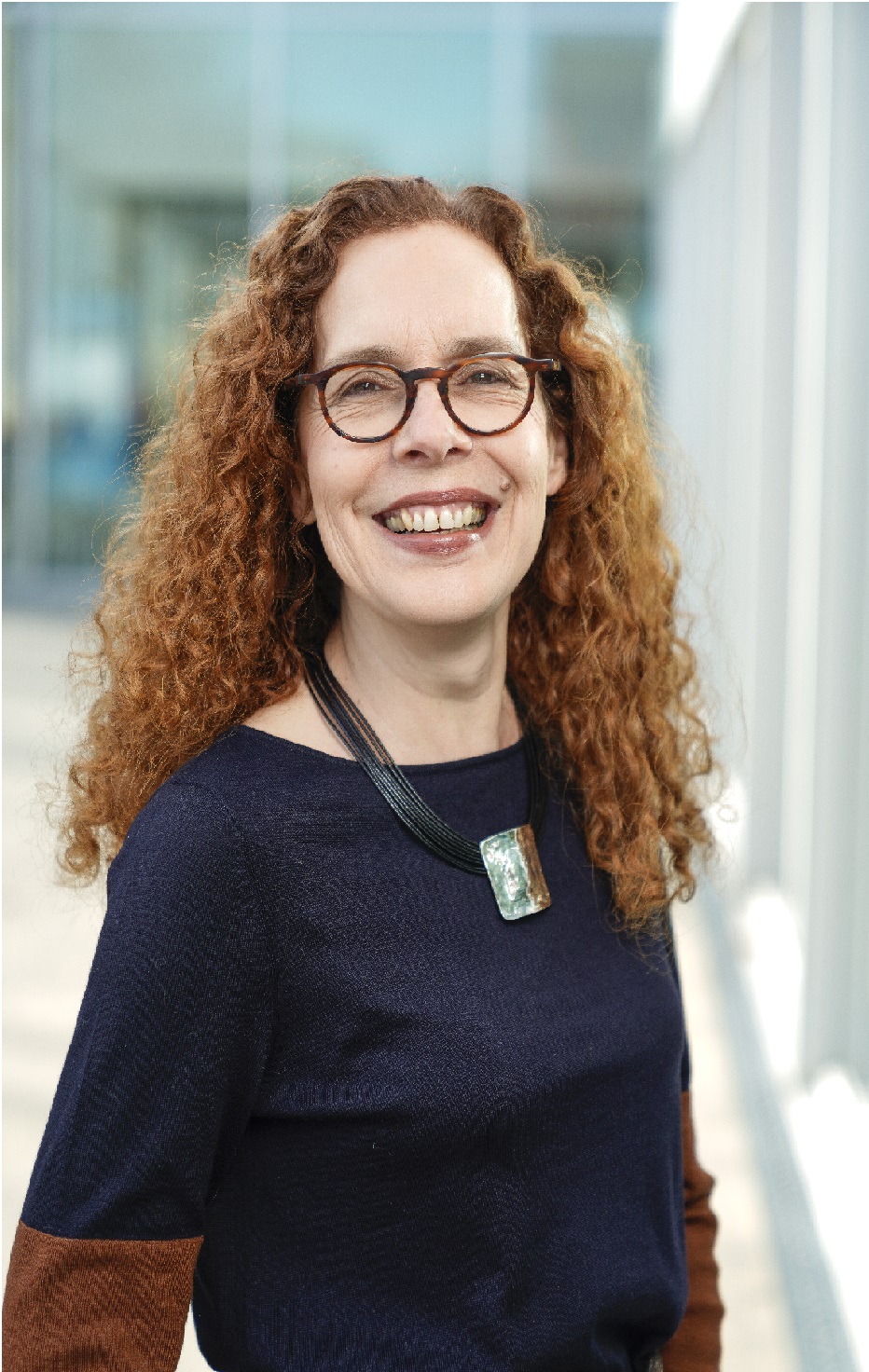
Dr Patricia M. Palagi has a BSc in Biology and an MSc in Computer Sciences from the University of Brasilia, Brazil, and a PhD in Cognitive Sciences from the INPG, Grenoble, France. In 1997, she joined the Molecular Imaging and Bioinformatics Laboratory in Geneva, one of the five pillar laboratories of what would become the SIB Swiss Institute of Bioinformatics a year later. In the SIB, she started as a researcher in neural networks, proteomics, bioinformatics for mass spectrometry analysis, and she gradually moved to teaching, training and management of a variety of bioinformatics education programs and training events. In 2014 she was appointed Leader of the SIB Training group, in charge of developing and delivering training courses in bioinformatics and computational biology. She is co-chair of the ISCB Education COSI, Deputy Editor for the Education track of the PLOS Computational Biology journal, ELIXIR Training Coordinator for Switzerland, and a GOBLET member. Some of her topics of interest are FAIR for training and best practices in training. She is co-leader of the ELIXIR Train the trainers (TtT), trainer in TtT courses, and has been contributing to the development of TtT training curricula and materials, together with colleagues from ELIXIR, GOBLET and ISCB, for over five years.
References:
- Palagi PM. Lessons learned when moving SIB Training courses from in-person to online – anything in bioinformatics can be taught online, but not anyhow. F1000Research 2020, 9:1148 - doi: 7490/f1000research.1118316.1
- Gurwitz KT, Singh Gaur P, Bellis LJ, et al. A framework to assess the quality and impact of bioinformatics training across ELIXIR. PLoS Comput Biol. 2020 Jul 23;16(7):e1007976. doi: 10.1371/journal.pcbi.1007976. eCollection 2020 Jul.
- Greub G, Palagi PM, Dylus D, Egli A, et al. Clinical bioinformatics for microbial genomics and metagenomics: an ESCMID Postgraduate Technical Workshop. Microbes Infect. 2020 Aug 22:S1286-4579(20)30146-5. doi: 10.1016/j.micinf.2020.07.008.
- Garcia L, Batut B, Burke ML, Kuzak M, et al. Ten simple rules for making training materials FAIR. PLoS Comput Biol. 2020 May 21;16(5):e1007854. doi: 10.1371/journal.pcbi.1007854. eCollection 2020 May.
|
5. Via A, Attwood TK, Fernandes PL, Morgan SL, Schneider MV, Palagi PM, Rustici G, Tractenberg RE. A new pan-European Train-the-Trainer programme for bioinformatics: pilot results on feasibility, utility and sustainability of learning. Brief Bioinform. 2019 Mar 22;20(2):405-415. doi: 10.1093/bib/bbx112. |
|
6. Morgan SL, Palagi PM, Fernandes PL, Koperlainen E, et al. The ELIXIR-EXCELERATE Train-the-Trainer pilot programme: empower researchers to deliver high-quality training. F1000Res. 2017 Aug 24;6:ELIXIR-1557. doi: 10.12688/f1000research.12332.1. eCollection 2017. |
